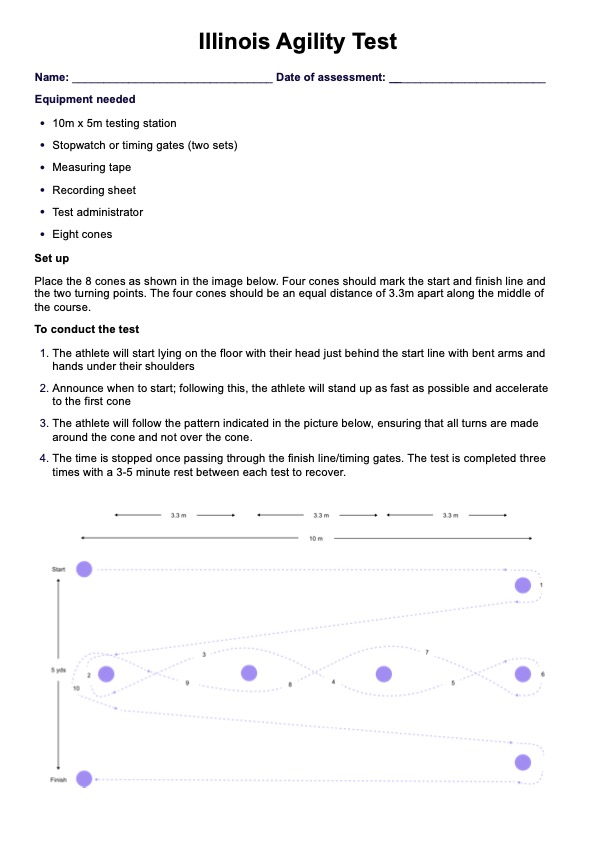That's up to you. It's recommended that you do three or more to ensure consistency in the results; however, if you decide to have them do several trials, please make sure to observe whether they are tired.

Illinois Agility Test
Learn how to conduct the Illinois Agility Test. Download a free PDF template for easy clinical documentation.
Use Template
Illinois Agility Test Template
Commonly asked questions
Yes. This test may not be suitable for people with pre-existing joint or muscle problems. Before they can participate in this exercise, these people need to procure medical certificates that allow them to take the test. Also, this test only assesses a person's speed/agility. It doesn't account for strength or endurance.
Yes. The number of cones for the Illinois Agility Test is strictly eight, especially because the scoring benchmarks are also based on that number.
EHR and practice management software
Get started for free
*No credit card required
Free
$0/usd
Unlimited clients
Telehealth
1GB of storage
Client portal text
Automated billing and online payments











